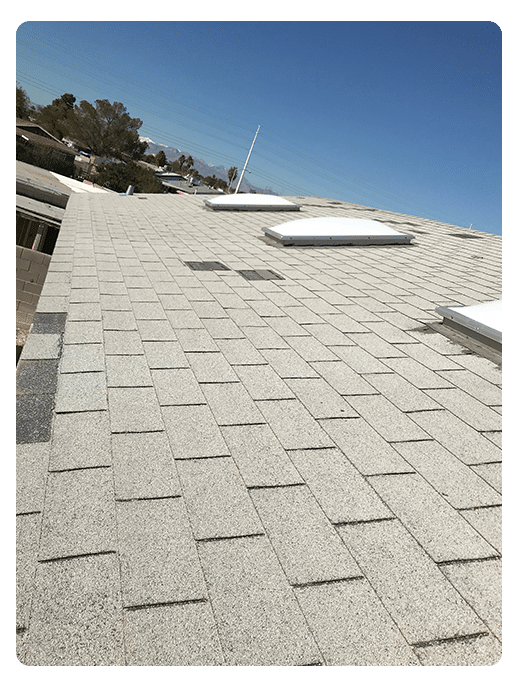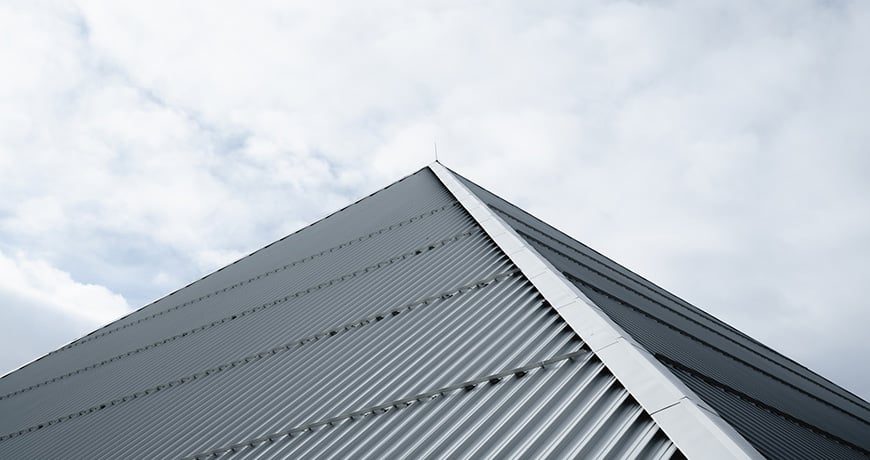Storms can be powerful and destructive. As a homeowner, it is important to know the signs of storm damage on your roof in order to make sure you are taking appropriate steps for repair or replacement.
This article will provide tips for spotting storm damage on your roof so that homeowners can identify potential issues as soon as possible.
Understanding how storms can affect roofs is key to being able to spot any related damages quickly and efficiently. Common types of damages include missing shingles, leaks from damaged flashing, discoloration or streaking caused by algae growth, dents and holes due to hail strikes, and sagging ridges from weight accumulation.
In addition, understanding what type of materials were used when constructing the roof may also help in determining whether there has been any storm-related damages.
Types Of Storm Damage
Storm damage is a serious issue that can cause severe problems for homeowners. It’s important to be able to spot potential storm damage on your roof in order to take appropriate action and avoid further complications.
There are three main types of storm damage which must be addressed: wind, hail and water. Wind-related damage includes shingle loss or displacement as well as uplifted nails caused by strong winds.
Hailstorms can also cause significant damage such as granular erosion, cracked or missing shingles, and dents in metal roofs. Water damage from storms often manifests itself through leaking around flashing points or missing seals between the chimney and wall. Additionally, standing pools of water may indicate an improperly installed drainage system.

Understanding how each type of storm affects the roof will enable you to recognize any potential issues early before they become more costly repairs down the line.
Understanding The Roof Structure
Storm damage can vary widely depending on the type of storm, severity and location.
It is important to understand the structure of your roof in order to accurately assess any potential damage after a storm has passed.
Roof structures consist of several components that make up the foundation including rafters, sheathing and shingles.
The thickness of these materials will affect how well your roof withstands certain weather conditions like wind or hail storms.
It is also essential to pay attention to flashing around chimneys, vents and skylights as they are prone to leaks during a rainstorm due to their exposed nature.
Additionally, it’s important inspect for missing or damaged shingles which could be signs of more serious structural issues lurking beneath them.
Taking regular preventative measures such as regularly cleaning gutters and inspecting your roof annually can help reduce the chances of extensive damages occurring due to heavy winds or debris buildup.
Missing Shingles
Missing shingles can be an indication of storm damage to your roof. To spot this type of damage, inspect the roof after a storm and watch for any displaced or dented shingle pieces that may have become dislodged from the surface.
It is important to note that missing shingles could also indicate age-related wear and tear on older roofs more than it does necessarily mean there has been wind or water damage due to a storm.
Examine nearby homes in order to get an idea of how widespread the problem might be — if several other homes in your neighborhood show similar signs of aging, then you likely don’t need to worry about potential storm damages.
Leaks From Damaged Flashing
The presence of leaking water around flashing is an indication that the roof has sustained damage. Flashing, which are thin pieces of metal or plastic installed at places where two surfaces meet such as between a chimney and roof, play an important role in keeping water out of your home and should be inspected for signs of wear and tear after any storm.
Leaking flashing can cause significant damage to both the structure of the house and its surrounding landscape if left unrepaired. It is therefore essential to repair damaged flashing quickly.
If you suspect that there might be leaks from damaged flashing on your roof, it would be wise to contact a professional roofer for an inspection. A professional will examine the condition of all flashings and provide recommendations for necessary repairs or replacements.
The roofer may also suggest additional preventative measures such as installing new vent pipe seals or replacing existing sealant with more durable material to protect against future storms. Keeping up with maintenance can help extend the life span of your roof while avoiding costly repairs down the line.
Discoloration Or Streaking
Discoloration and streaking on a roof can be indicative of storm damage.
The discoloration may appear as lighter or darker patches, which could indicate water damage from hail or wind-borne debris.
Streaks often occur when granules have been knocked off the shingles due to strong winds or large hailstones.
Other signs that these weather events may have caused harm include cracked, curled, broken, split or missing shingles.
It is important to carefully inspect your roof for these telltale signs after a severe storm passes through your area.
If any of the above symptoms are present it is best to contact a professional roofer who can assess the extent of the damage and help you determine whether repairs are necessary in order to ensure the longevity of your roof and protect against future leaks and other issues.
Impacts From Hail
Hail damage to a roof can be significant, as it can cause direct damage and indirect damage.
Direct hail damage is caused when hailstones impact the surface of the roof and dent or break shingles, often resulting in visible marks on the material.
Indirect hail damage occurs when hailstones land on the roof’s surface but do not directly affect it; instead, they force water underneath shingles and into vulnerable areas.
This can lead to leaks that are difficult to detect until major problems arise from them.
It is important for homeowners to inspect their roofs after any severe weather event that contains hail, so as to identify potential issues before they become more serious.
Additionally, insurance companies may require specific evidence of hail-caused damages before providing coverage for repairs or replacement costs.

Sagging Ridges From Weight Accumulation
Sagging ridges on a roof can be indicative of damage caused by weight accumulation. This form of storm damage is typically caused when snow accumulates on the roof, or other forms of precipitation such as hail or ice pellets accumulate and create an excessive amount of weight along the ridge line.
In some cases, sagging ridges may also indicate that there has been some type of structural collapse due to age or extreme weather conditions.
The tell-tale signs of this kind of damage are visible from both inside and outside your home. On the interior side, you may notice water stains above doors and windows which could signal water leaking through deteriorated shingles.
Additionally, if you look at the exterior side, you will likely see cracks in the mortar between bricks or gaps in gutters where they meet with the edge of the roofline. These types of issues should not be ignored as they can lead to significant problems down the road if left untreated.
It’s important to inspect your roof regularly for any potential issues so you can address them quickly before they become major problems requiring costly repairs or replacements.
If you believe that your roof is showing signs of wear and tear due to storm damage, it is best to contact a professional immediately who can evaluate the situation and offer solutions for repair or replacement options if necessary.
Conclusion
The roof is one of the most important elements in a home, and it can be damaged during storms. It is important to understand the types of storm damage that may occur on your roof as well as how to spot them.
This includes missing shingles, leaks from damaged flashing, discoloration or streaking, impacts from hail, and sagging ridges from weight accumulation.
To ensure you are able to adequately identify any possible storm damage on your roof, it is advisable to use binoculars for an up-close look at its condition prior to entering onto the roof itself. Additionally, examining gutters and downspouts can alert homeowners of potential issues with their roofs after a storm has occurred.
By taking these proactive steps toward identifying potential storm damage on your roof, you will help protect against further destruction caused by weather events.


